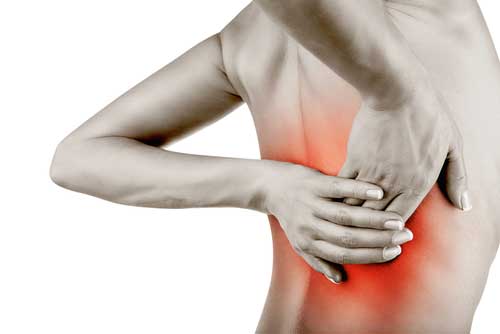Do you have lower back pain or hip pain? Have you had more than your share of exercise-related injuries? One possible cause of these problems that often go undetected is a leg length discrepancy. Simply put, a leg length discrepancy is where one leg is shorter than the other. No one is perfectly symmetrical, but a significant asymmetry in leg length can put you at risk for postural imbalances and injury.
Leg Length Discrepancy is Common
You might be surprised to learn that between 60% and 90% of people have a discrepancy in leg length. So why isn’t almost everyone walking around with back pain? A difference in leg length won’t necessarily cause problems if the difference in length between the two legs is less than 5 millimeters. That’s around two-tenths of an inch. If one leg is shorter than the other by more than this amount, you could experience issues with low back or hip pain. Some sources don’t believe treatment is necessary unless the discrepancy between legs is at least a half-inch, while others believe even minor leg length discrepancies need to be addressed.
Could this be an under-recognized cause of low back pain? In one study, an orthopedic physician found that over 75% of a total of 1,000 army recruits who experienced hip or lower back pain had a leg length discrepancy of 5 millimeters or greater. With lower back and hip pain being common symptoms, leg length inequality is something to think about if you have frequent episodes of hip or back pain. You might wonder how unequal leg lengths cause back pain. The inequality creates an imbalance that your body tries to compensate for through spinal rotation. This places additional stress on your back.
If anything, hip pain may be more common than lower back pain in people with unequal leg lengths. The painful hip is usually the side hooked to the longer leg. Where you may really experience problems with a leg length discrepancy is if you run a lot. Leg length discrepancies have been linked with stress fractures in runners. Leg length inequality can affect performance in sports, even resistance training, by contributing to strength imbalances.
Having an inequality in leg length can affect your knees too. One study in high school athletes found athletes with a discrepancy in leg length were more prone towards knee injuries when they played sports. When one leg is shorter than the other, the foot attached to the shorter leg tends to pronate (turn outward) more to compensate. This places additional stress on the knee, ankle, and calf.
Measuring Leg Length Accurately
How do you know whether you have unequal leg lengths? You might think you can simply pull out a tape measure and measure each leg. Usually not. Even if you have a health professional measure the length of each leg, it’s hard to detect a discrepancy of fewer than 25 millimeters, about an inch. Remember, pain can be a problem with discrepancies of as little as 5 millimeters and physical measurements will only tell you if you have a significant inequality in leg length of an inch or more.
How can you get accurate leg length measurements to see if there’s a significant inequality? Standard x-rays or a CT scan are the most accurate method. Sometimes looking at a person’s gait raises suspicions that there’s a discrepancy in leg length. For example, a noticeable pelvic or shoulder tilt or unequal arm swing is suggestive.
Two Kinds of Leg Length Problems
To make matters more complicated, a leg length discrepancy can be anatomical or functional. If you have an anatomical leg length inequality, one leg is physically shorter than the other. You may have been born with this discrepancy or the growth plate in one leg may have been damaged during childhood, so one leg grew less than the other. A previous leg fracture can also alter the bone in the affected leg and lead to leg length inequality. Sometimes a fractured bone heals in a shortened position.
The other type of leg length discrepancy is functional. Functional leg length discrepancies are caused by non-anatomical problems that alter leg symmetry. Examples include abnormalities involving the hip joint or sacroiliac joint on one side or abnormal pelvic tilt or rotation. Muscle/joint imbalances are another cause. When the muscles on one side are abnormally tightened, the legs will appear to be different in length, although they may measure the same. The discrepancy is often more noticeable when you’re lying down. The problem is classified as functional and is due to abnormal alignment. Of the two, functional leg length discrepancies are more common.
What Can You Do about It?
Once you know you have unequal length lengths, you can correct an anatomical leg length discrepancy by wearing a heel lift in your shoe on the shorter side. A physical therapist or podiatrist can determine how much lift is needed to restore stability. In extreme cases, surgery may be an option to restore normal biomechanics. Legs can be lengthened or shortened via surgery, but most orthopedists won’t recommend surgery for leg length inequalities of less than 2 inches. If you have a functional leg length inequality, you will likely need physical therapy to restore normal stability and improve biomechanics.
The Bottom Line?
If you have recurrent problems with back or hip pain, consider the possibility that you have a leg length discrepancy. It’s a surprisingly common problem that often goes undiagnosed.
References:
Podiatry Today. “Detecting And Treating Leg Length Discrepancies” December 2002.
Lommell.com. “Standard Protocols for Treating Leg Length Inequality”
J Am Podiatr Med Assoc. 2006 Nov-Dec;96(6):499-504; discussion 505-7.
Cedars Sinai. “Leg Length Discrepancy”
Runners Connect. “Leg Length Discrepancy in Runners: The Scientific Research”
Massage Today. “Leg Length Discrepancy and Low Back Pain” January 2008.
Related Articles By Cathe:
4 Ways to Protect Your Back and Spine When You Lift
Can Weight Training Ease Lower Back Pain?
5 “Old Age” Conditions That Strength Training Helps With


